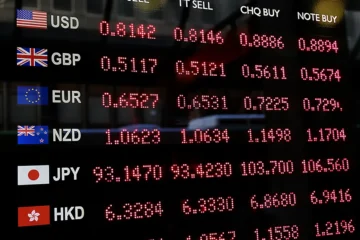Introduction
On Sunday, October 13, Poles will vote in parliamentary elections for the 10th time since the first partially free elections in 1989. In this article we aim to provide political and economic background of Poland, economic policies of the competing parties, as well as an analysis of investors’ expectations for the post-election period.
The events of 1989
The current Polish political history goes back to 1989, when after a decade of an economic crisis, workers’ protests and the rise of “Solidarity” – the first independent labour union in the Soviet-bloc, the communist government has allowed for the first partially free elections. For the first time, Poles could choose 35% of parliamentary mandates and all of the senate members in a public vote. What followed was a crushing victory of “Solidarity” representatives and the first democratic government was formed. Soon after, other Eastern-bloc countries followed, marking the beginning of 1989 Revolutions. The new Polish government adopted a set of liberal economic policies, also known as “shock therapy”, allowing for quick economic growth in the 1990s. Later, in 1991, the first fully free elections took place. In 1999 Poland joined NATO, and in 2004 the EU, reaching next milestones towards convergence with developed Western economies.
Since the early 1990s Poland has experienced a variety of ruling parties, starting from a mix of centre-right and left-wing parties during 1990s and early 2000s, a Law and Justice (PiS) government between 2005-2007 and then the ruling of the centrist Civic Platform (PO, currently KO) – a Donald Tusk founded party, in the years 2007-2015.
2007-2015 era and the turning point
Despite the economic growth that Poland was able to retain even during the period of the 2008 crisis, the Civic Platform, according to many Poles, didn’t manage to fulfil their campaign promises. At that time, as a result of perceived growing inequalities, political polarization, and the “tape affair” scandal (a publication of recordings of controversial private conversations between ministers, politicians and important public figures), we’ve seen the emergence of Law and Justice, the current ruling party.
It appealed primarily to Poles who felt excluded from their stake in the economic growth of the country that has taken place since the 1989 transformation. For them, Law and Justice’s wide and generous welfare program, as well as prioritizing what they advertised as an independent, national political agenda rather than just a parallel of the EU one, seemed to be the answer. In May 2015, Law and Justice’s candidate Andrzej Duda managed to achieve a slight margin and win the Presidential Elections, gaining momentum for the upcoming October 2015 Parliamentary Elections. Law and Justice’s flagship program was the “Family 500+”, a monthly PLN 500 benefit given for every second and subsequent child.
In October 2015, Law and Justice won the elections, winning across all age and education-level groups. The party achieved a big enough margin to rule by themselves, a situation unprecedented in Polish history since 1989, thus opening a way towards their planned reforms without the need of forming a coalition. What followed was an implementation of the aforementioned welfare schemes, as well as a clash with the EU over a judiciary reform, said to be an erosion of the rule-of-law in Poland. This was paired with a big rise of anti-immigration and anti-LGBT+ sentiments, mainly propelled by TVP, a state-owned media platform.
Currently
As of now, it seems that the re-election of Law and Justice is inevitable, as the party has been recently polling at around 47%, more than 20 percentage points above the centrist Civic Coalition (KO) at 26%, its main opposition, whose backbone are Civic Platform’s politicians. The third biggest political power according to the polls is the Left coalition, a three-party left-wing group, polling at around 14%. Two other parties that can expect to surpass the required 5% are the Polish Peasant Party (PSL) polling at around 7% and the far-right Confederation with 6% (at high risk of not passing the threshold). Using the D’Hondt method, which is used in Poland, the ruling party should once again win the majority and form the government alone, however, it is heavily dependent on the final turnout.
Polish economy at a glance
Despite the generous and redistributive welfare schemes, the government has managed to keep inflation low, at around 2.1%, and the budget deficit within 2% to GDP. Combined with a 5.1% GDP growth rate in 2018, a sub-4% unemployment rate and a significant reduction of the VAT gap – defined as the losses to the state budget due to the grey economy and fraudulent VAT refunds in intra-community transactions, the government has been able to fund the scheme thus far. However, new challenges arise with the expected GDP growth falling below 4% for the 2019-2021, an ageing population, emigration and a likely German economic slowdown. Nevertheless, Law and Justice is planning to expand Family 500+ coverage, which would amount to 1.7% of GDP, but at the same time expected to boost consumption by 3% in 2020. From October 2019, the government has also lowered the first personal income tax bracket from 18% to 17%. At this point it’s also worth noting that Poland very much relies on the big domestic consumer market, which at 61% of GDP, greatly exceeds the EU average. Poland has also been the biggest recipient of EU funds, receiving $102 billion and $106 billion over 2007-2013 and 2014-2020 periods respectively. Standard & Poor’s credit rating for Poland is A- (stable), while Moody holds an A2 (stable).
The table above allows for a further overview of the state and the development of the polish economy. The effects of PiS’ first term can be seen by an increasing current account deficit, which is predicted to amount to 1.3% of GDP this year, still within the EU limits.
Indices analysis
TD Securities analysts state that: “According to polls the ruling party PiS (Law-and-Justice) is expected to retain a single party majority. We think this outcome would be a more or less market neutral event. If there is a surprise outcome, in which PiS doesn’t get more than 50% of the seats and has to form a coalition, the market would likely perceive this as a market negative event.” We believe this analysis mostly originates from the fact that a PiS majority is nearly entirely priced into the market. Hence, any other outcome of the elections could shock the market and introduce negative uncertainty.
While in the short-term, a continuation of the PiS majority might be the strongest option for the market. We would like to look at a few indices to compare how PiS’ ruling has affected the polish capital markets compared to their faring under the main opposition’s rule. To do this we took 2 indices created by a polish portal called Money.pl that aim to investigate state-owned companies’ performance under each of the parties’ rules. The PO-PSL (predecessor of today’s KO) index began with a composition of 10 state-owned companies and finished with 19. Under PiS we saw a further increase in large state-owned companies, and hence during the running of the index it expanded to a composition of 22 companies. As a way to then benchmark these indices, we compared them to Warsaw Stock Exchange’s two most popular indices. The WIG20 looks at the 20 major and most liquid companies on the exchange. Whereas, the mWIG40 comprises of 40 medium-sized companies aiming to best represent that market cap interval.
When looking at the data, we can see that during PO-PSL’s first term state-controlled companies generally outperformed general indices more than their equivalents under PiS control. We also have to highlight that the pure WIG indices performance shouldn’t be looked at as a reflection of the ruling parties’ economic policies, as PO-PSL’s first term was taking place during and after the 2008 Financial Crisis. Furthermore, the comparison favours the PiS index, as in the aftermath of the 2008 financial crisis Polish state-owned companies were impacted more heavily than private ones, hence making it harder for the PO-PSL Index to outperform the general market.
What are the parties’ business and economic promises?
In this section we summarize what the parties are promising to business owners. The Central Statistical Office of Poland studies show that the main struggle of businesses today include rising labour costs and employee shortages, lack of legal stability and high financial burdens, mainly taxes and contributions.
Changes in The Social Insurance Institution (ZUS) contributions take headlines in most parties’ campaigns. For over 2 million micro-entrepreneurs in Poland, the amount of ZUS contributions paid is one of the largest monthly burdens (flat-rate; PLN 1317 in 2019, PLN 1400+ in 2020). PiS has promised that the contribution will depend on a given company’s income, which will improve the situation of the self-employed who earn the least. The PM even went as far as claiming that this could produce around PLN 1bn in savings for companies. The Left coalition wants to introduce a choice for micro-enterprises – they can either pay flat-rate ZUS contributions or contributions that are proportional to the scale of the company’s operations. KO has promised to reduce ZUS contributions for the smallest entrepreneurs and change them to be linked to the minimum wage. On the other hand, PSL has proposed that micro-entrepreneurs pay voluntary contributions.
So far, only KO presented proposals to reduce the tax burden for large companies. It has suggested, for instance, that such entities should not pay income tax on profits that are reinvested in the company. It also promised to speed up VAT refunds for “companies that pay tax in an honest way.” Other parties are promising tax changes, but these mainly concern small and medium-sized enterprises. PiS wants to raise the annual flat-rate limit on registered income from EUR 250,000 to EUR 1 mn, and in the future up to EUR 2 mn. KO has promised to simplify flat tax fees on registered income without deductible cost.
KO also wants simpler contracts, such as leasing contracts, to be concluded online. It also wants to lift the Sunday commerce ban. Additionally, it proposes to introduce a rule called “2 for 1.” Each act that imposes new bureaucratic obligations on companies is set to remove two other unnecessary legal acts. PSL suggests that the Social Security Institution (ZUS) should pay employees on sick leave starting on the 15th day of their absence from work (currently ZUS pays after 33 days). PiS is expected to continue the current policy, which focuses on improving the competitiveness of small companies in relation to large ones. For this purpose, PiS introduced legislation that prevents payment gridlocks, i.e. situations where several payments each await settlement of the others. The Left coalition’s agenda doesn’t show much focus on the business sector. Its brief promises included the popularization of online accounting for companies and the support of innovation.
Changes in state-controlled companies form a big topic due to their significance on the Polish market. KO, PiS and the Left coalition all proposed a certain degree of changes. Some sources claim that PiS appears to be considering restoring the Treasury Ministry. It may also propose “a unified mechanism for verifying candidates for managerial positions in state-controlled companies.” The Left coalition has proposed that candidates for management boards should take a course and pass an exam before an apolitical commission. Furthermore, the process would include competitions and broadcasting of their interviews online. KO wants the qualifications of candidates for management boards and supervisory boards of subject companies to be vetted by specialized companies.
None of the groups suggested strong proposals that would allow a further opening of the Polish labour market (namely to migrants), probably due to fearing a strongly partitioned reaction of the voters. It is also worth noticing that some proposals put forward by political parties can be harmful to employers, especially those that call for a bigger increase in the minimum wage. Kaczynski outlined that PiS will increase it by close to 100% by 2023. In the same time frame inflation is expected to hover at slightly above 2%.
How budget-exhaustive are the parties’ promises?
While the aim of this article is not to compare the general agendas of Poland’s different parties in detail, another interesting point of reference for how each party would impact the economy is Polityka Insight’s calculations of how much their election promises would cost, which can be found below.
How is the market pricing in potential near term developments?
As mentioned, due to the strong influence of the government on companies with significant state-ownership, it would be interesting to see whether investors see the upcoming elections as a potential tail event. Our sole focus here will be the WIG20 Index, as we disregard analysis on single titles to be more concise. Looking at the implied volatility surface of options on the WIG20 Index, we can clearly see strong demand from investors for downside protection, as implied volatility for options with strike price below the prevailing spot price (moneyness < 100%) spikes significantly. Since this pattern holds for Dec-19 options which have the shortest time to maturity (note: options on the WIG20 Index are only available in quarterly terms, e.g. Dec-19, Mar-20, etc.), it seems quite reasonable to say that this reflects investors’ concerns about Sunday’s elections. Over the course of the past month, this uncertainty actually increased, as can be seen from the graph of the volatility surface (on the right). The difference in implied volatility between 80% and 120% moneyness options increased in absolute terms from -13.60% to -21.14%, therefore reflecting the increasing demand for downside protection. However, such developments need to be interpreted with caution, since trading volumes in these options are very thin.
A more liquid asset class are futures on the WIG20 Index. As can be seen from the graph below, there is no mentionable price difference between futures of different maturity dates, however, they trade at a significant discount to the prevailing spot price of the WIG20 Index. Since this is not justifiable from a fundamental pricing perspective – the risk free 3-month interest rate in Poland trades at 1.2% and thus well above zero – such a price gap is a clear indicator of a drop in the index level of the WIG20 in Q4 2019.
Bocconi Students Investment Club does not endorse any of the parties described. The aim of the article is to look at the factual economic data and future estimates. This article was posted right after the end of the electoral silence and does not include any updates made available by exit poll results.
TAGS: Poland, Elections, Polish Elections, Economy, Overview, Options, Futures, Outlook



0 Comments